The pace of technological disruption is massive. By the time the development team is still working along the software development lifecycle, a requirement changes. In this case, the challenge is to incorporate the new changes while also ensuring faster time to market. This is where Agile comes into play because of its iterative and the incremental nature that allows quick response to change.
The origins of Agile date back to 2001 when 17 software developers met at a resort in Snowbird, Utah, to develop a better method for developing software.
Since the advent of Agile development methodology, many organizations have been embracing Agile transformation.
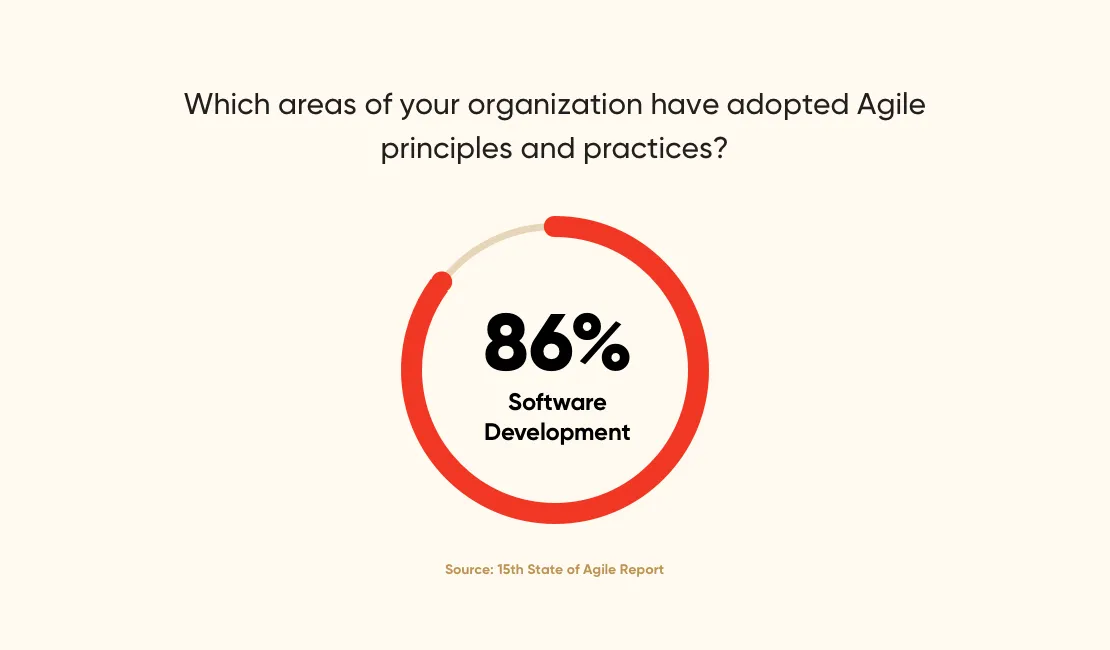
This write-up presents a comprehensive look at Agile and how it can assist with a business’ software development initiatives.
What is Agile Methodology?
Agile is an iterative and incremental approach to software development that helps deliver quality software while ensuring faster time to market. The hero characteristic of Agile is its adaptiveness to change.
Agile promotes:
- Collaboration among teams (with cross-functional setups)
- Open communication
- Better change management
- Iterative development (ability to step back in the SDLC process)
- Incremental development (delivery in small increments)
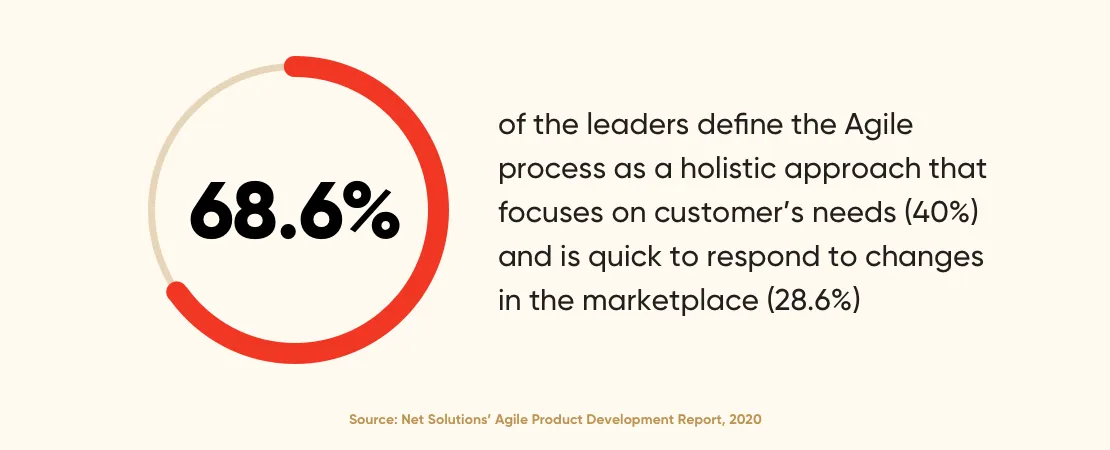
What is the Agile Manifesto?
In 2001, seventeen software developers published the Agile Manifesto which highlights the four values and twelve Agile principles.
The goal of the Agile Manifesto is to — uncover better ways of developing software by doing it and helping others do it.
The four values of Agile methodology include:
- Individual and Interactions over Processes and Tools
- Working Software over Comprehensive Documentation
- Customer Collaboration over Contract Negotiation
- Responding to Change over Following a Plan
And the 12 principles of Agile methodology include:

Why Agile?
Agile is a better way to develop software as it ensures due consideration to changing requirements without hampering time to market. According to the 14th State of Agile report, the top reasons for adopting Agile include:
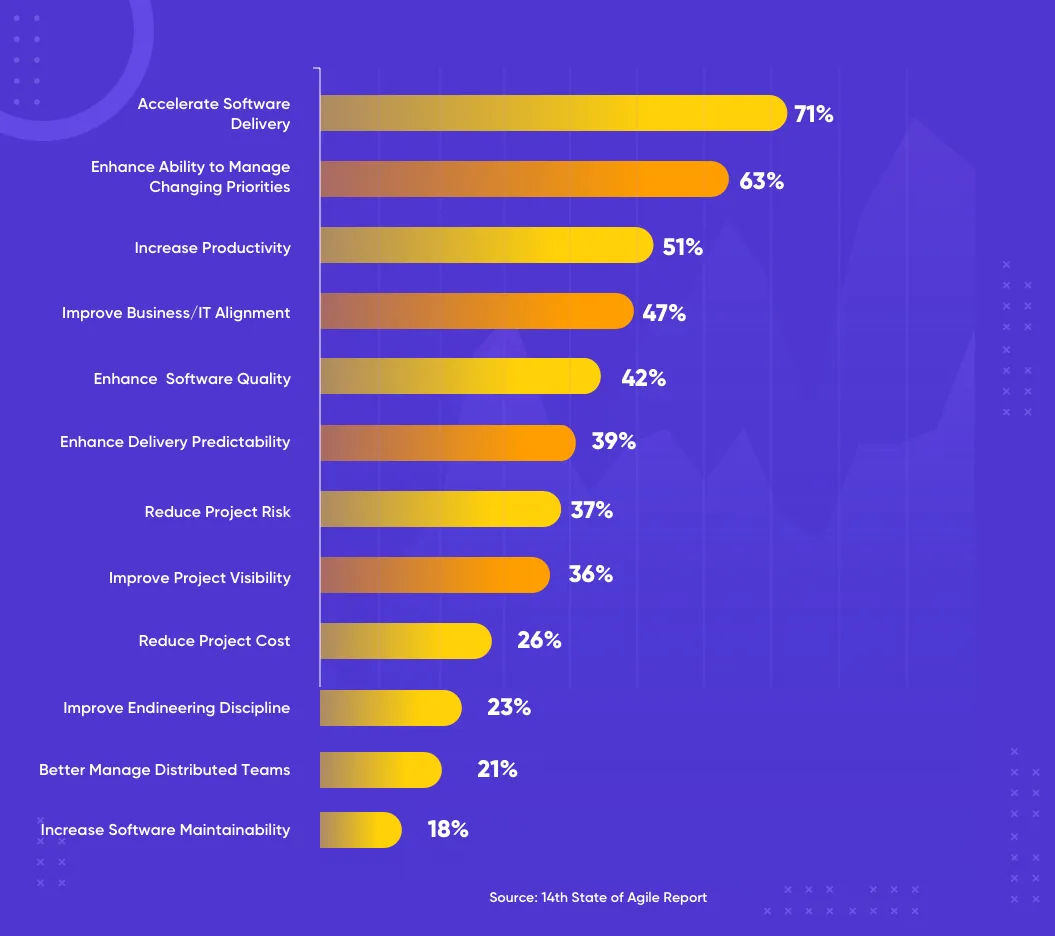
What is Agile Transformation?
Many organizations are still following the traditional software development methodologies (owing to the golden hammer bias), which, in turn, leads to failure to adapt and respond to the changing technological landscape. With Agile transformation, the traditionally set organizations can plan and initiate the move toward adopting and implementing Agile development solutions.
Agile transformation introduces a step-by-step approach to going fully Agile. An organization is fully Agile when the different teams naturally and consciously follow the Agile practices to complete a task at hand.
What is an Agile Framework?
The agile framework defines the different approaches that Agile follows to develop software.
Some of the popular Agile Frameworks include:
- Scrum According to The Scrum Guide, Scrum is a lightweight framework that helps people, teams, and organizations generate value through adaptive solutions for complex problems. The Scrum Guide mentions the standards and practices used in the scrum process which were created by Ken Schwaber and Jeff Sutherland in 2010.
According to the 14th State of Agile Report, around 75% of the respondents already practice Agile Scrum methodology.
The three Scrum roles and their responsibilities include:
- Scrum Master: Ensures that the entire software development process is smooth and free of any impediments
- Product Owner: Maintains the communication of requirements between the client and the software development team and prioritizes product backlog
- Scrum Team: Picks up user stories from the product backlog and works on them across sprints. The team also adjusts work for the next sprints

- Kanban Kanban is a popular framework that aids in Agile software development. The framework promotes real-time communication and transparency of work and narrows down the work-in-progress (WIP) limits. The tasks are visually represented on a Kanban board, which highlights the status and progress of work.
Unlike Scrum, there are no assigned roles in Kanban. The entire team is collectively responsible for completing the development tasks.
- Crystal Methodologies Crystal Methodology focuses on addressing the first value of the Agile Manifesto (i.e., “Individuals and Interactions over Processes and Tools”). Alistair Cockburn introduced this framework at IBM in 1991.
The prominent features of Crystal methodology include:
- Human-Powered: The software development process will vary according to the project’s requirements and the team has the freedom to choose the right strategy going forward
- Adaptive: There are no predetermined tools. The team gets to decide what tools and processes they will be using
- Ultra-Light: The framework is documentation free (i.e., there is no need for documentation and reporting)
- Dynamic Software Development Method (DSDM) DSDM evolved as an Agile framework (previously popular as a software development methodology) that addresses cost, time, and quality concerns. DSDM uses the MoSCoW rule of prioritization (based on must-haves, should-haves, nice-to-have, and won’t-haves) for finalizing requirements.
DSDM works on solving people’s problems as it is based on the belief that projects fail due to a lack of collaboration among teams rather than due to technology. Moreover, DSDM is independent of tools and techniques — making it a flexible Agile framework to work with.
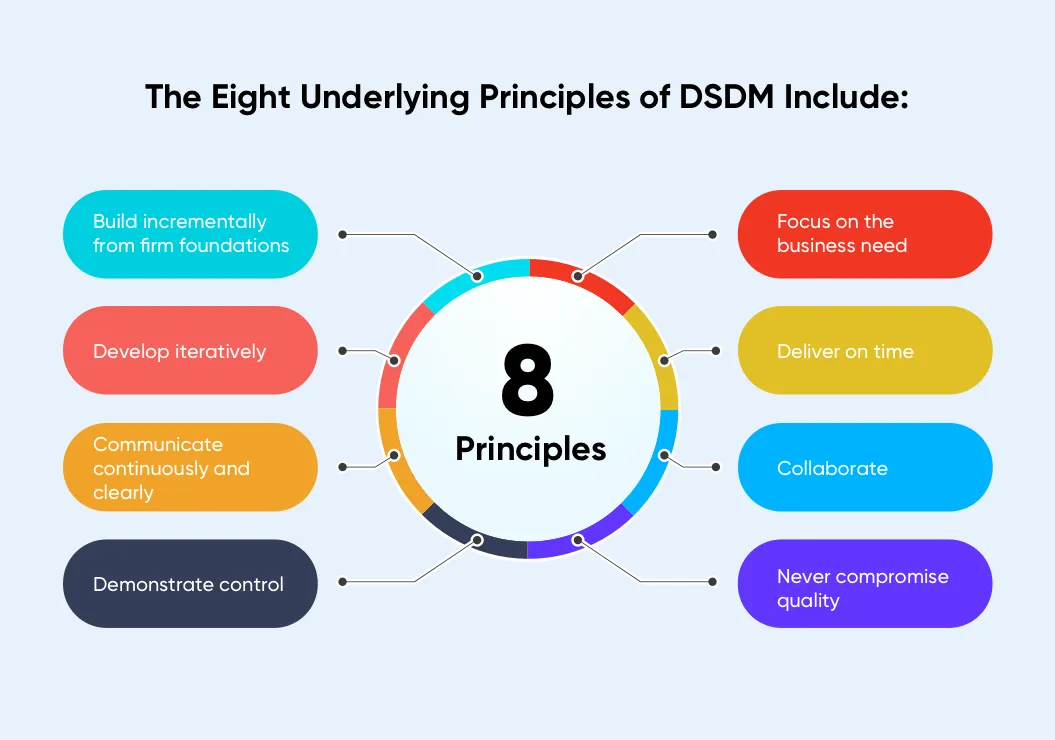
- Feature Driven Development (FDD) FDD is an Agile framework that focuses on features (i.e., a complete, independent functional segment used to perform a particular task) such as the payment gateway for the product.
The product development lifecycle of FDD includes:
- Develop an overall model
- Build feature list
- Plan by feature
- Design by feature
- Build by feature
- Lean Software Development (LSD) Lean Software Development (LSD) is an Agile framework that focuses on optimizing development time and resources while eliminating waste and maximizing value delivery. Toyota developed LSD, therefore, it was initially known as the Toyota Production System.
The LSD methodology is similar to the minimum viable product (MVP) strategy. The basic version of the product is launched in the market and changes are made based on feedback received.
- eXtreme Programming (XP) eXtreme Programming (XP) is an Agile framework that focuses on developing high-quality software while also ensuring a stress-free life for the development team. Kent Beck introduced XP in 1996 to support:
- Changing software requirements
- Small, colocated development teams
- Automated unit and functional tests
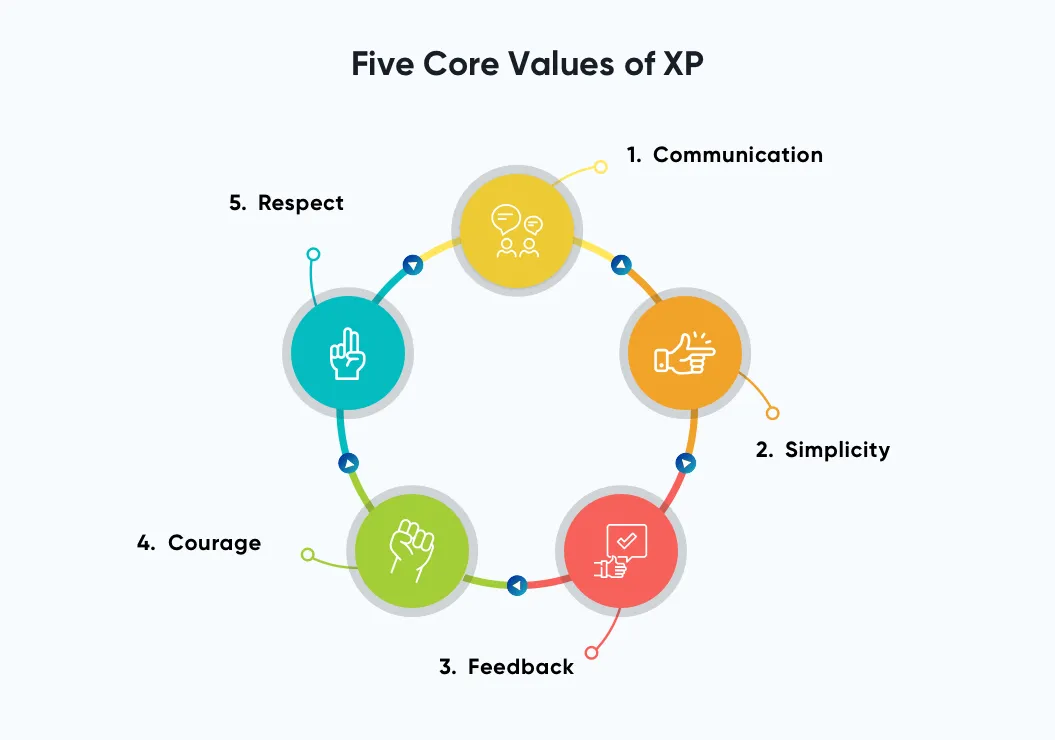
The Agile Glossary
The common terms that are associated with Agile include:
- User Story A user story is a natural language description of a particular software feature. It is written from the perspective of the end-user.The format of a user story is — “As a [role], I want [goal] so that [benefit]”.
- Epic An epic is a large user story that can be further broken down into smaller, manageable tasks.
- Sprint A sprint is a short and predetermined time-box period where the scrum team works on completing the assigned tasks. Sprint planning helps in picking up tasks from the product backlog that, in turn, help define the sprint goals.
- Daily Standups Daily standups are everyday meetings among the Agile development team where they discuss — what they did yesterday, what they plan to do today, and any challenges they faced while completing the tasks at hand.
- Product Backlog A product backlog is a prioritized list of user stories. The most important tasks are listed at the top of the product backlog so that they can be picked up first.
- Backlog Grooming A backlog grooming session occurs at the end of every sprint to reprioritize tasks as new realities emerge. The goal of backlog grooming is to ensure the most valuable tasks reside at the top of the product backlog.
- Retrospectives A retrospective is a meeting held among the software development team where they revisit the past projects and the completed sprints to discuss what they have learned. This helps to improve the Agile process and ensures that past mistakes aren’t repeated.
- Technical Debt Technical debt is defined as the extra costs associated with the tasks that require reworking later, such as pending bug fixtures or editing messy code that was initially written to hit a set launch date.
- Work in Progress (WIP) Limit Work in progress (WIP) limits help set the maximum amount of work that can be assigned within a sprint cycle. Setting a WIP limit helps to identify the bottlenecks in the Agile development process from early on.
- Spike A spike is a separate time-boxed event where the team resolves a problem or researches a question.
- Velocity Velocity is a critical metric in Agile that is a measure of the work completed in a given time frame. The velocity is calculated at the end of every iteration and also helps review team performance.
How to Estimate an Agile Project?
Agile estimation is a technique that helps calculate the effort necessary to complete a prioritized item in the product backlog. Estimation in Agile is also done based on story points (i.e., measuring the difficulty of completing a given user story).
There are several Agile estimation techniques in practice. Some of which include:
- T-Shirt sizing
- Planning poker
- Analogy
- Dot voting
- Affinity mapping
- Bucket system
- Three-point method
What are the Stages of Agile Development Lifecycle [Agile-Scrum]?
The six stages of the Agile development lifecycle are:
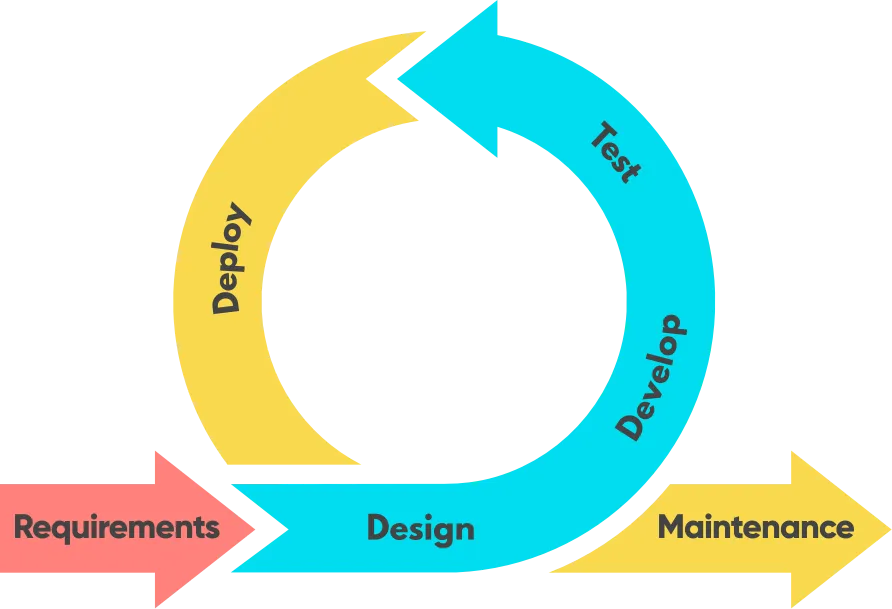
Stage 1: Requirements Gathering
This stage aims to undergo an initial requirements analysis. In Agile, this phase is known as “identification of user stories.” The user story is a natural language description of the particular functionality of the software.
This stage helps in understanding:
- Who is the target audience ( i.e., the users of the software)
- What problems will the software solve?
- What are the different user stories that will go into building the MVP?
Stage 2: Design
The objective of this stage is to create a prototype that helps visualize the UI/UX flow of the software under development. The design architects, designers, and developers work collaboratively through this stage to enhance the overall experience design of the product.
Stage 3: Development
The Agile development team works on coding within time-boxed sprints. The developers pick the user stories from the prioritized product backlog and start working to complete the small, manageable tasks.
Stage 4: Testing
The Agile testing team checks the code for bugs, inconsistencies, and other issues. The identified issues are reported back to the development team. The team then conducts backlog grooming and re-prioritizes tasks to accommodate the bug fixing tasks.
Stage 5: Deployment
This stage aims to release the developed user stories in the market (i.e., executing the launch process).
Stage 6: Maintenance
The software is maintained throughout its lifetime. At this stage, the team works on introducing updates, addressing bug fixtures, and providing ongoing support.
What are the Benefits of Agile Development Methodology?
The several advantages of Agile development methodology include:
- Increased Value Proposition — increased visibility, increased business value, and low risk
- Speed to Market — as the software is developed and delivered in increments
- Promotes Cross-Functional Setups — where teams maintain continuous communication and collaboration to complete a task at hand
- Response to Change — it is easy to iterate through the Agile lifecycle to accommodate new requirements
- Risk Reduction — the MVP launch helps in gaining early feedback, which, in turn, reduces the risk of unmet user needs
- Ensures Quality Delivery — the Agile development team divides tasks into smaller, manageable chunks helping them working wholeheartedly across the sprints while maintaining the quality of work delivered
FAQs Related to Agile
1. What is Scaled Agile Framework (SAFe)?
Scaled Agile Framework (SAFe) is a framework for enterprises for developing large-scale software using lean and Agile practices. SAFe is suitable for businesses that have a stronghold over the scrum process.
2. What are the KPIs of Agile?
The popular key performance indicators for Agile include:
- Lead Time: Measures the time between a requirement made and its completion.
- Burndown Charts: These are the visualization charts that demonstrate the pending work in the product backlog
- Burnup Charts: These are the visualization charts that demonstrate the amount of work completed
- Velocity: Measures the amount of work completed at the end of every sprint

3. What is Code Refactoring in Agile?
Code refactoring is the process of modifying the internal structure of the code in a way that its external structure remains unaffected. The purpose of code refactoring is to clean and refine the code to make it more readable and understandable.
Code refactoring helps minimize technical debt (i.e., the cruft in the code that leads to messy and unstructured code fragments).
4. What is Sprint Zero?
Sprint zero is an unofficial meeting that is conducted before the official sprint starts. It helps create a vision for Agile product development from early on so that they have an idea of their respective roles and responsibilities.
As a part of Sprint Zero, the team creates a rough draft version of the product backlog.
5. What are the Common Mistakes in Agile?
The seven most common mistakes in Agile include:
- Poor Agile training
- Lack of efforts to maintain cross-functional setups
- Not appointing a scrum master
- Focusing too much on familiar tools which leads to golden hammer bias
- Focusing too much on the predetermined process
- Lack of working on the customer feedback
6. What are Agile Anti-Patterns?
Agile anti-patterns are the bad or unrecommended practices followed in the Agile development process. Some of the common Agile anti-patterns include:
- Miscommunication
- Unclear requirements and expanding scope creep
- Gold plating or scope stretching
- Ignorance of sustainable pace
- Considering discovery and delivery as separate entities
7. What is the difference between Agile and DevOps?
DevOps is an extended version of Agile. Where Agile focuses more on the development side of things, DevOps does a better job by focusing on development and deployment of code.
An organization that follows Agile development methodology can conveniently adjust to DevOps. Both of these processes help software development from requirements gathering to code deployment.
Here is a comparison chart for Agile vs DevOps:
| Agile | DevOps |
|---|---|
| Is a software development methodology that helps deliver quality software while ensuring response to change | Is a software development practice that promotes collaboration among the teams for developing and maintenance of the software |
| Agile frameworks: Scrum, FDD, DSDM, Crystal Methodology, Lean development, feature-driven development | DevOps Pillars: Continuous Integration, continuous delivery, continuous deployment (CI/CD) |
| Helps improve adaptability and response to change | Helps improve efficiency and increases automation of processes |
Conclusion
Agile is one of the most popular software development methodologies that introduces iterative and incremental development. The best part about Agile is that it can accommodate requirement changes at any stage of the development process. There are many Agile frameworks to choose from that promote different approaches for implementing Agile. These frameworks include Scrum, Kanban, DSDM, FDD, Crystal methodology, Lean, etcetera.
Practicing Agile for developing software products is a good decision because it provides the ability to work on new requirements as different realities emerge. The Agile Manifesto introduces the twelve principles and four values of Agile that help in developing quality software. This write-up covers everything about Agile and the related concepts.
If a business is thinking about developing new software, they should consider Agile as their go-to software development methodology as it helps ensure:
- Response to change
- Faster time to market
- Software quality
- Overall cost reduction
- Better software maintainability



